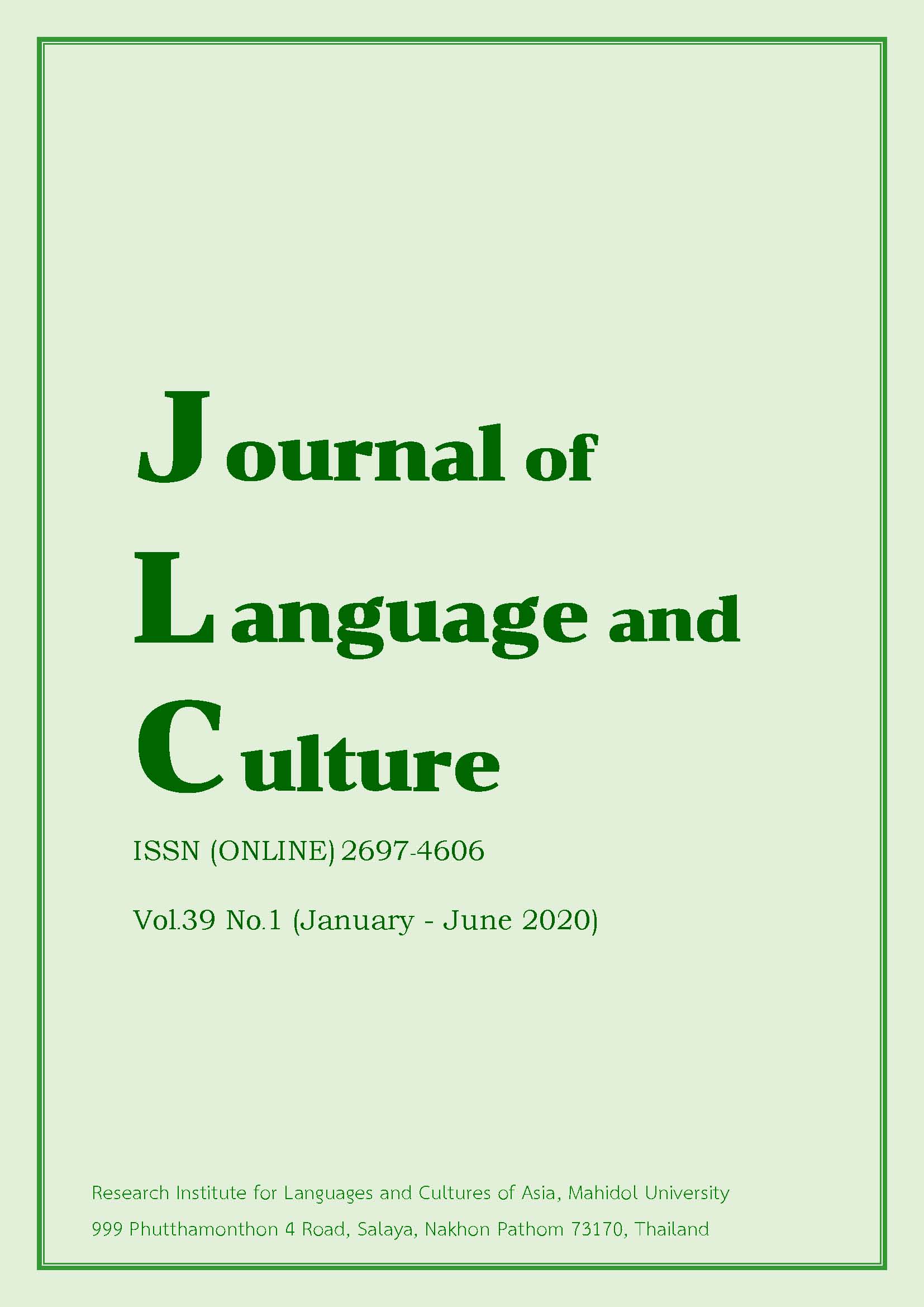Translating English downtoners into Thai in expressive texts
Main Article Content
Abstract
This study aims to explore the meaning and linguistic forms found in the translation of the four English downtoners – a bit, a little, a little bit and slightly – based on the theoretical framework of translation equivalence. Data derived from 150 sentences drawn from a corpus of expressive texts and their Thai translations. The result of the study shows that the translations can be divided into two groups. First were those which conveyed the downtoning effect in accordance with the original version (64.67%). Their linguistic forms are associated with Thai downtoners equivalent to that of the source text or the use of equivalent expressions that tend to collocate with words with neutral semantic load. The second group comprised those which produced an intensifying effect contrary to that conveyed by the original (35.33%). Their subcategories include omission of the downtoning element and the use of expressions conveying intensification which produce an intensifying effect and generally collocate with words carrying negative connotation. It was also found that the use of equivalent expressions, as well as the omission of the downtoning element and use of expressions conveying intensification, are for the purpose of making the target text more appealing to the reader and maintaining equivalence or naturalness, which is related to collocation, conciseness and clarity.
Article Details
The articles featured in the Journal of Language and Culture (JLC) constitute academic works representing the viewpoints of the respective author(s). It is crucial to note that these opinions do not necessarily reflect those of the Editorial Board.
All articles published in JLC are released under the Creative Commons Attribution 4.0 International License (CC BY 4.0). This license grants permission for unrestricted use, distribution, and reproduction in any medium, provided proper credit is given to the original author(s) and the source.


